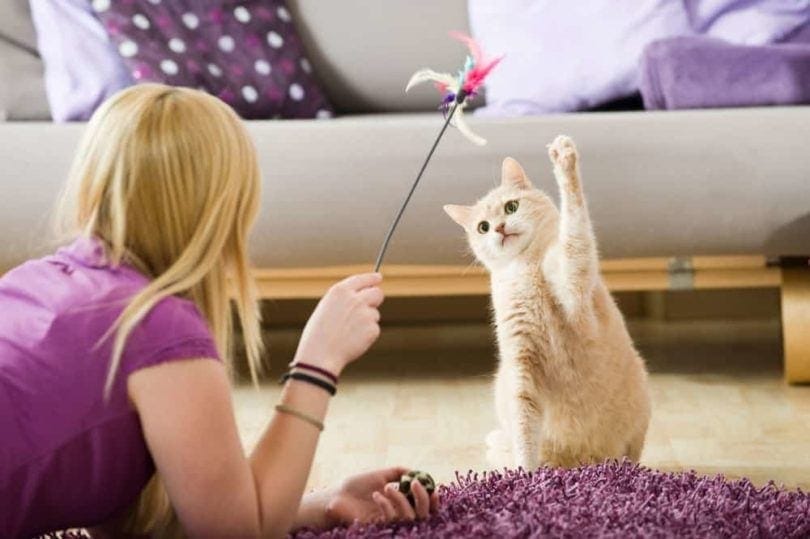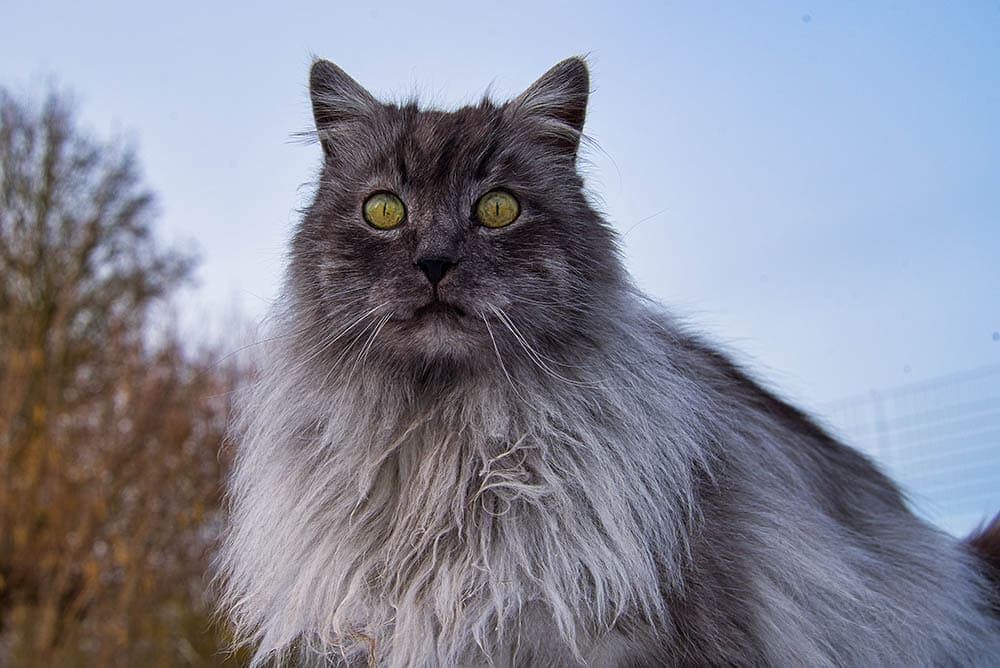Blue Persian Cats: Facts, Pictures, Origin & History
By Oliver Jones
Updated on
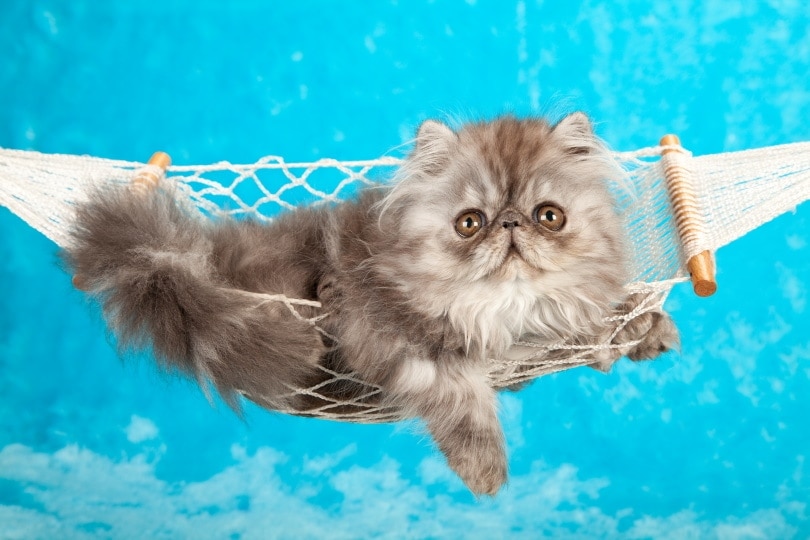
Click to Skip Ahead
The Blue Persian cat has a notable appearance with their flat face and large eyes. They also have an unusually short nose, which can keep them from breathing properly compared to other cats. They have a medium to large body, heavy bones, and short, thick legs.
The most noteworthy aspect of the Blue Persian cat is their long, silky fur, and they are also called Blue Longhairs. If you have ever been curious about these unique little cats, read on to learn more history and interesting facts about them.
The Earliest Records of Blue Persian Cats in History
The Persian is an ancient breed. It is thought that they came from Mesopotamia originally, which was later called Persia and then Iran. The cats were not well-known throughout most of the world until European explorers smuggled them out of their homeland of Persia in the 17th century.
When they arrived in Europe, traders marketed them alongside other hallmarks of the elite, such as jewels and silks. These Persian felines then became symbols of luxury for the Western world.
Due to mixed breeding in the 19th century, some people believe Persians are different from the ancient Iranian felines. They might still have some Persian in their blood, but some say that it’s not enough to qualify them as “Persian” cats. This point is widely debated.
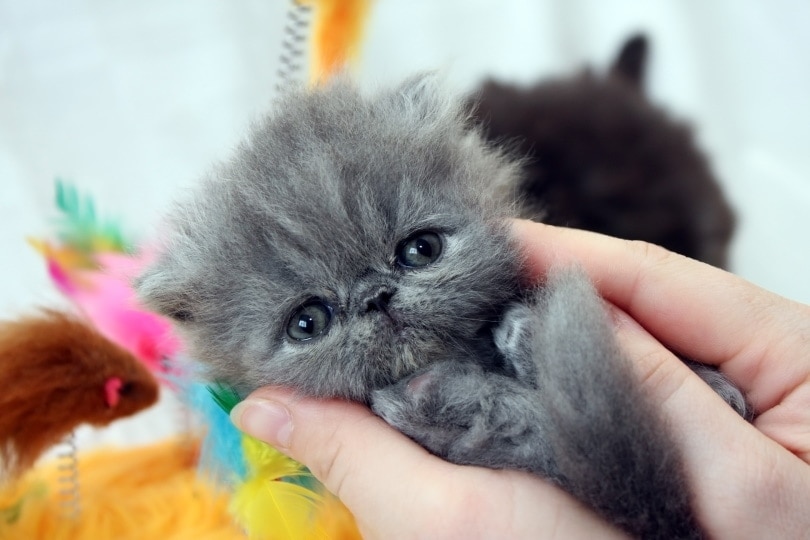
How Blue Persian Cats Gained Popularity
From the time that Persians came from the sunny desert of Persia to Europe, they have grown in favor. They have been the favorites of quite a few historically royal figureheads. That includes Queen Victoria, a well-known lover of many animals.
Their popularity started to skyrocket when Persians came to the big screen. A Persian starred next to James Bond as the pet companion of the villainous Blofeld, and they made recurring appearances in the Austin Powers movies.
Formal Recognition of Blue Persian Cats
Since Persian cats have been around for eons, they have an old-school pedigree to go with their lineage. The purebred cats in the Persian class were first accepted into kennel clubs throughout Europe in the mid-19th century. They were even a part of the first cat show held in London’s Crystal Palace in 1871.
The first purebred Persians arrived in the U.S. around 1875, where they became one of the earliest pedigreed cats by the Cat Fancier’s Association. This association accepts a wide variety of Persian coat colors, including:
Persian coats can come in a veritable rainbow of colors, but many varieties have yet to be accepted.
Top 5 Unique Facts About Blue Persian Cats
1. Blue Persian Cats Are Lazy
Persians are lazy cats. You will almost always find them sleeping for long periods of the day. On average, cats sleep between 12 to 16 hours a day. However, the Blue Persian takes this to the next level; they sleep about 20 hours daily.
2. These Cats Aren’t the Sharpest Tools in the Shed
Many breeds are whip-smart, getting into mischief and practically training their owners to always get them what they want. In contrast, Persians are friendly but not that bright. They spend most of their time sleeping, so they don’t have too much time for scheming.
3. Persians Are as Friendly as Dogs
One of the most endearing characteristics of a Persian cat is their friendly personality. They are often as sweet-tempered and loving as a dog. This is quite strange for cats because many breeds are known for being more aloof. The Persian contrasts that by running up to the door to greet you after a long day. They love to cuddle up in your lap as soon as they get the chance.
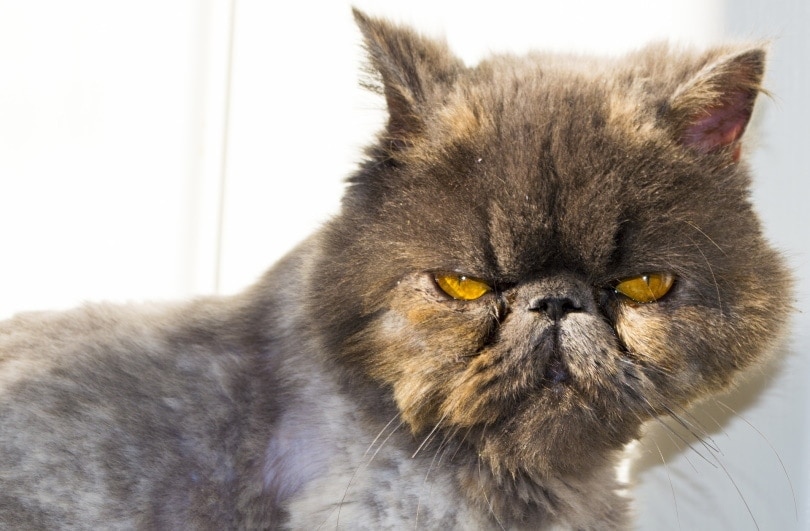
4. A Blue Persian Often Lives a Long Life
When you get a Blue Persian, expect to have a companion for many years. Compared to many purebred animals, Persians are not predisposed to as many health issues. The one exception is polycystic kidney disease. Fortunately, most breeders have been able to eliminate the gene that causes this in these cats.
Persians have an average lifespan of between 15 to 18 years. However, some with a healthy lifestyle and good genetics might even live past 25!
5. Persians Don’t Care for Their Coats
Most cats that we know are cleaning machines. They care for themselves by licking and grooming until they have worked out all their tangles and mats. However, the lazy side of the Persian cat is undeniable when it comes to their coats. They would rather nap than clean themselves.
Unfortunately, the Persian has a thick, longhaired coat that quickly gets mats. This lack of personal care makes them incredibly high maintenance. To stay on top of their coat, you will need to brush them every day. The upside to this is that the more you brush your Persian coat, the less the cat will shed around the house.
Does a Blue Persian Cat Make a Good Pet?
If you want a friendly cat that isn’t likely to find themselves in all kinds of trouble, this breed is a good option for you. However, you might not find the Blue Persian as engaging as other cats because they don’t commonly like to play around, even as kittens.
The other factor you must consider is the maintenance that goes into maintaining the Persian’s coat. If you don’t keep them combed, they will lead a relatively miserable life. Mats and tangles pull at their skin when they get too big and tight. It can cause almost constant pain if not attended to properly.
Conclusion
Blue Persians have fun personalities, a fascinating history, and quirky facets to their character that set them apart from many other cat breeds. From Persia to Queen Victoria’s courts and becoming one of the most popular breeds in North America, these cats have left their paw prints on our hearts.
- See Also: Blue Colored Cat Breeds
Featured Image Credit: Linn Currie, Shutterstock




